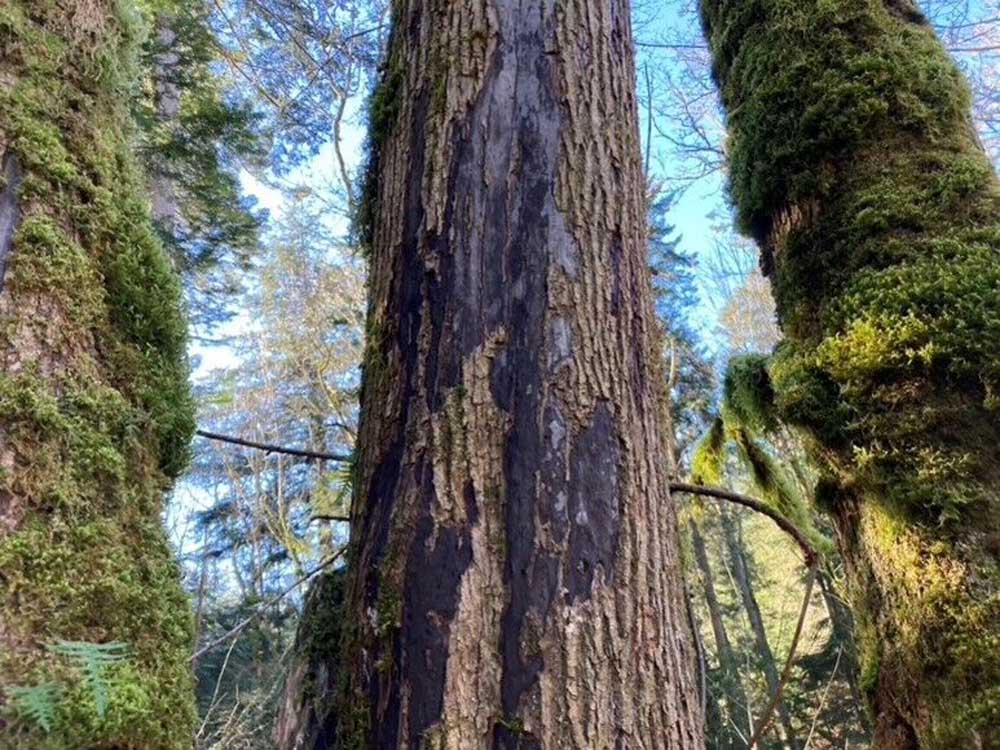Maple Health Watch: Community scientists needed
Published 7:22 am Wednesday, June 21, 2023

- This is a maple tree trunk with sections of black and damage from sooty bark disease, Cryptostroma corticale.
Maple trees are important components of our urban and natural forests and those managed for habitat or diversity.
Trending
Our largest native species, bigleaf maple, is characterized by its little helicopter-like winged seeds, enormous leaves — the biggest of any maple species, the thick moss that accumulates until the bark is nearly hidden, and its persistent capacity to resprout after fire or cutting.
Indeed, vine maple and Douglas maple are also important species, adding uncanny color to our forest understory in autumn in addition to providing habitat and many services such as soil stabilization.
Bigleaf maple also has a rich and ever-evolving cultural legacy. Its wood has been cherished by indigenous communities for canoe paddles, containers, and tools since time immemorial. Its enormous leaves also made exceptional temporary containers and preparations from bigleaf maple were also used medicinally.
Trending
The wood is also coveted for woodworking and specialty products such as guitars because of its attractiveness when spalted or figured. Recent interest in bigleaf maple syrup has also reinvigorated efforts with tapping (see resources below for more information). Together these uses demonstrate the ever-evolving culture dependent on healthy maple trees.
Maple trees are also critical to the livelihoods of communities in the Pacific Northwest. Nearly one-in-four trees on our urban streets is a maple tree . There, they provide essential services such as shading communities to reduce the impacts of heat waves. Keeping these trees healthy is therefore critical for supporting community health.
Bigleaf maple decline has been observed since the early 2010s without strong explanations. Recent studies from University of Washington found associations with increased summer temperatures (Betzen et al 2021) and Bradshaw et al (2021) linked recent spikes in powdery mildew to a species with European origin. In addition, another disease known as “sooty bark disease” has emerged as an issue on many maple species (Brooks et al 2022).
In addition to these known issues, community scientists are needed to watch for invasive species like Asian longhorned beetle. Together these issues provide a lot to hypothesize, but not much is known about the current health status of our maple trees and there are threats on the horizon to watch for.
Together we can monitor maple trees for these emerging issues and share observations to understand their current health status. Washington State University has launched a Maple Health Watch project on iNaturalist to map healthy and unhealthy maple trees.
Community scientists are needed in an effort like the ongoing Western Redcedar Dieback Map project (www.inaturalist.org/projects/western-redcedar-dieback-map). Community scientists are encouraged to share observations and take note of tree health issues such as sooty bark disease and powdery mildew.
You can get involved by signing up as a community scientist (foresthealth.org/scientists) or adding observations of maple trees to the Maple Health Watch (www.inaturalist.org/projects/maple-health-watch) project on iNaturalist. Instructions for adding observations to the iNaturalist project are available online (tinyurl.com/WA-Maple-Health). Observations of both healthy and unhealthy maples trees are needed to identify important parameters for understanding tree health and monitoring the issues affecting our trees.
Maple dieback and sooty bark disease webinars (https://treehealth.wsu.edu/recordings/)
Forest Health Watch Community Scientist Network (https://foresthealth.org/scientists/)
Maple Health Watch iNaturalist Project (https://www.inaturalist.org/projects/maple-health-watch)
Maple Health Watch Field Guide (https://foresthealth.org/wp-content/uploads/2023/05/Maple-Health-Watch-Maple-Health-Watch.pdf)
Sooty Bark Disease Diagnostic Guide (https://pubs.extension.wsu.edu/sooty-bark-disease-diagnostic-guide)
Maple Bark Disease FAQ (https://doh.wa.gov/node/12614)
iNaturalist – Getting Started (https://www.inaturalist.org/pages/getting+started)









